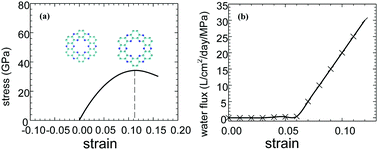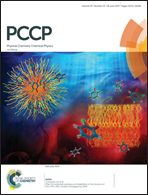Ultrafast permeation of seawater pervaporation using single-layered C2N via strain engineering
Abstract
Emerging two-dimensional (2D) ultra-thin nanomaterials are ideal candidates for next-generation high-throughput membranes. 2D carbon nitride C2N possesses intrinsic regular and uniformly distributed sub-nanometer pores which probably allow a high permeation flux. This work reports on the investigation of seawater pervaporation through a single-layered C2N membrane via a combined approach of first-principles calculations and molecular dynamics simulations. The C2N layer remains stable when the strain is less than a threshold point of 12% at which the pore size is enlarged by 50%. The strained C2N membrane only allows water molecules from seawater to permeate, and the water flux in C2N is enhanced by one to four orders of magnitude compared to that in other membranes. The water flux exhibits an Arrhenius-type relation with temperature. The hydrogen-bonding interaction among water molecules in C2N is weaker and decays faster than that in bulk water, which is because it is energetically unfavorable for water molecules to enter C2N. This proof-of-concept study suggests that C2N might be an appealing membrane material for seawater pervaporation.



 Please wait while we load your content...
Please wait while we load your content...